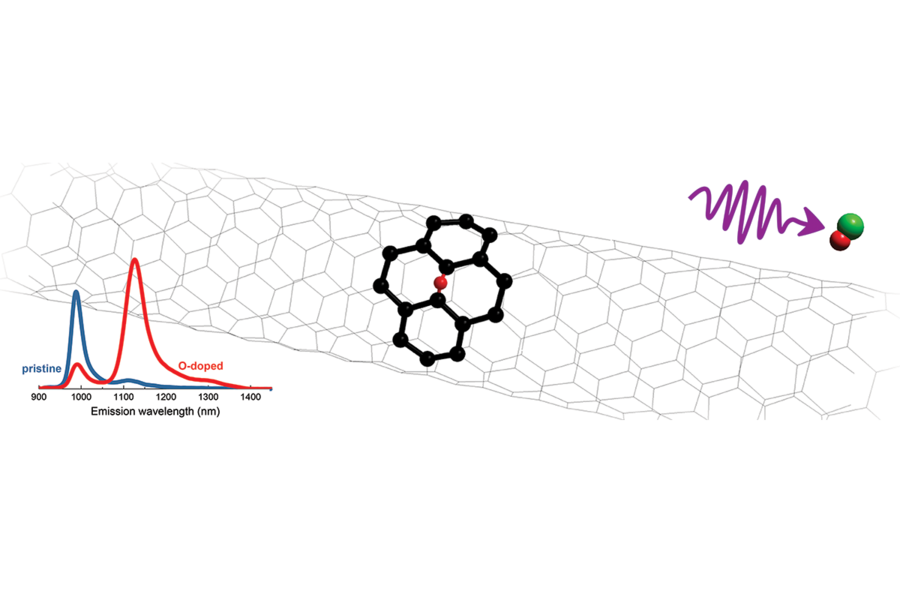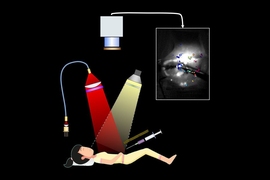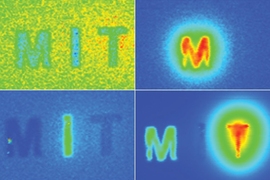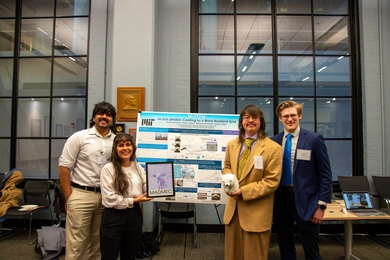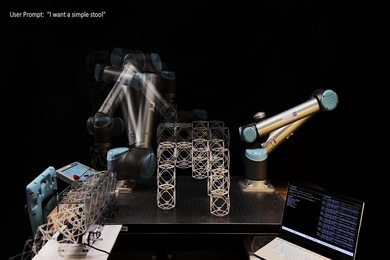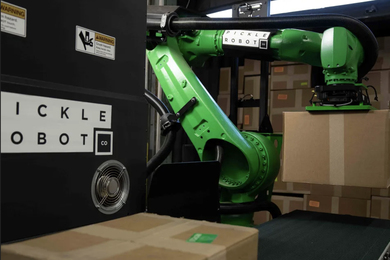Quantum computing and quantum cryptography are expected to give much higher capabilities than their classical counterparts. For example, the computation power in a quantum system may grow at a double exponential rate instead of a classical linear rate due to the different nature of the basic unit, the qubit (quantum bit). Entangled particles enable the unbreakable codes for secure communications. The importance of these technologies motivated the U.S. government to legislate the National Quantum Initiative Act, which authorizes $1.2 billion over the following five years for developing quantum information science.
Single photons can be an essential qubit source for these applications. To achieve practical usage, the single photons should be in the telecom wavelengths, which range from 1,260-1,675 nanometers, and the device should be functional at room temperature. To date, only a single fluorescent quantum defect in carbon nanotubes possesses both features simultaneously. However, the precise creation of these single defects has been hampered by preparation methods that require special reactants, are difficult to control, proceed slowly, generate non-emissive defects, or are challenging to scale.
Now, research from Angela Belcher, head of the MIT Department of Biologicial Engineering, Koch Institute member, and the James Crafts Professor of Biological Engineering, and postdoc Ching-Wei Lin, published online in Nature Communications, describes a simple solution to create carbon-nanotube based single-photon emitters, which are known as fluorescent quantum defects.
“We can now quickly synthesize these fluorescent quantum defects within a minute, simply using household bleach and light,” Lin says. “And we can produce them at large scale easily.”
Belcher’s lab has demonstrated this amazingly simple method with minimum non-fluorescent defects generated. Carbon nanotubes were submerged in bleach and then irradiated with ultraviolet light for less than a minute to create the fluorescent quantum defects.
The availability of fluorescent quantum defects from this method has greatly reduced the barrier for translating fundamental studies to practical applications. Meanwhile, the nanotubes become even brighter after the creation of these fluorescent defects. In addition, the excitation/emission of these defect carbon nanotubes is shifted to the so-called shortwave infrared region (900-1,600 nm), which is an invisible optical window that has slightly longer wavelengths than the regular near-infrared. What's more, operations at longer wavelengths with brighter defect emitters allow researchers to see through the tissue more clearly and deeply for optical imaging. As a result, the defect carbon nanotube-based optical probes (usually to conjugate the targeting materials to these defect carbon nanotubes) will greatly improve the imaging performance, enabling cancer detection and treatments such as early detection and image-guided surgery.
Cancers were the second-leading cause of death in the United States in 2017. Extrapolated, this comes out to around 500,000 people who die from cancer every year. The goal in the Belcher Lab is to develop very bright probes that work at the optimal optical window for looking at very small tumors, primarily on ovarian and brain cancers. If doctors can detect the disease earlier, the survival rate can be significantly increased, according to statistics. And now the new bright fluorescent quantum defect can be the right tool to upgrade the current imaging systems, looking at even smaller tumors through the defect emission.
“We have demonstrated a clear visualization of vasculature structure and lymphatic systems using 150 times less amount of probes compared to previous generation of imaging systems,” Belcher says, “This indicates that we have moved a step forward closer to cancer early detection.”
In collaboration with contributors from Rice University, reearchers can identify for the first time the distribution of quantum defects in carbon nanotubes using a novel spectroscopy method called variance spectroscopy. This method helped the researchers monitor the quality of the quantum defect contained-carbon nanotubes and find the correct synthetic parameters easier.
Other co-authors at MIT include biological engineering graduate student Uyanga Tsedev, materials science and engineering graduate student Shengnan Huang, as well as Professor R. Bruce Weisman, Sergei Bachilo, and Zheng Yu of Rice University.
This work was supported by grants from the Marble Center for Cancer Nanomedicine, the Koch Institute Frontier Research Program, Frontier, the National Science Foundation, and the Welch Foundation.

